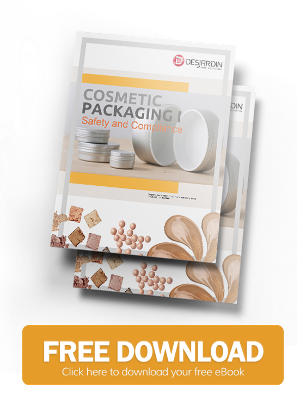In Europe cosmetics manufacturers and marketers must comply with the Regulation (EC) No. 1223/2009 of the European Parliament and of the Council on cosmetic products (November 30, 2009). This regulatory framework strengthens safety standards and simplifies procedures for cosmetic products sold in the EU.
Regulation Background
The EU cosmetic directive adopted in 1976 known as "Directive 76/768/EC" was superseded by the 2009 regulation.
In contrast to a directive, a regulation is automatically legally binding in all EU member states and does not need to pass the local parliaments. This is in fact advantageous for cosmetics manufacturers, as a European regulation allows for a coherent approach in all Europe, instead of searching compliance with all EU member state regulations individually.
The new rules maintain original product safety standards while incorporating new technological developments. While keeping the ban on animals test in place, the revision now also addresses the use of nanomaterials.
Key Points in the Regulation
 manufacturers must meet specific requirements when preparing a product safety report before it can be put on the market
manufacturers must meet specific requirements when preparing a product safety report before it can be put on the market- defines a "responsible person" as a legal and natural person and their obligations in regards to who can market cosmetic products
- manufacturers must give notification of their cosmetic products via the EU Cosmetic Products Notification Portal (CPNP)
- a responsible person is required to disclose serious undesirable effects (SUE) to EU members and national authorities, who compile feedback from users, health professionals and others
- colorants, preservatives and UV-filters (including those comprising nanomaterials) must be approved
- when products include nanomaterials the ingredients must be labeled with the word "nano" in brackets after the name of the substance, such as "titanium dioxide (nano)"
Product Safety
All cosmetic products marketed to the public must be safe for human health under normal use with the following factors taken into consideration:
- presentation that conforms with Directive 87/357/EEC (avoiding resemblence with food to enhance child safety)
- labelling
- instructions for use and disposal
- any other indication or information provided by the responsible person, as defined in Article 4
For cosmetic products sold outside the Community without being exported then imported, the manufacturer must designate in writing a responsible person within the Community. For imported cosmetic products, importers act as the responsible person, unless they designate in writing a responsible person within the Community. The same is true of distributors that place cosmetic products or modifications on the market under their name or trademark.
Labelling
 Labels on cosmetic products must be easy to read, although information can be abbreviated. In the case of multiple addresses, the one where the responsible person is most readily available must be highlighted.
Labels on cosmetic products must be easy to read, although information can be abbreviated. In the case of multiple addresses, the one where the responsible person is most readily available must be highlighted.
According to Article 19 in the Regulation the label must include:
- name, registered name and address from responsible person
- country of origin
- nominal content at the time of packaging measured by weight or volume with some exceptions
- expiration data for storing under appropriate conditions
- must say "best used before the end of" or the symbol shown in Annex VII point 3, followed by the date or details
- date of minimum durability must be clearly visible and consist of either the month and year or the day, month and year
- when appropriate, an indication of conditions that must be satisfied to ensure stated durability
When minimum durability is over 30 months, it is not necessary to indicate a date of minimum durability. Such products, however, must list how long a product is safe after opening.
Point 2 of Annex VII followed by the time period in months or years explains how this information must be indicated, which must include:
- manufacturer batch number or reference that identifies the product
- precautions taken for observation or product use, with respect to Annexes III or VI
- the term "ingredients" on the packaging followed by a list
Definition and Listing of Ingredients
An ingredient, as determined by this regulation, means any substance or mixture in the manufacturing process that is an intentional part of the product. Items that do not fit the definition of ingredients include impurities in the raw materials used and subsidiary technical materials used in the mixture that do not end up in the final product.
Perfumes and their raw materials must be referred to as "parfum," while aromatic compositions and raw materials must be called "aroma." Any other substances defined as "Other" in Annex III must be listed. The list of ingredients must appear in descending order of weight when the items were added to the product. However, ingredients that account for less than 1% of the product may be listed in any order following those about 1%.
Colorants, except those in hair dyes, may be listed in any order following the cosmetic ingredients. In the case of colour shades, colorants not mean for hair may be listed, using language such as "may contain" or the symbol "+/-." The CI (Colour Index) nomenclature must be used when appropriate.
|
Other Required Listings
Product ClaimsLabelling must be clear so that consumers are not misled by any of its characteristics, which include text, names, trade marks, pictures and figurative or other signs. |
Disclaimer:
The postings in this blog section do not necessarily represent Desjardin's positions, strategies or opinions.
References and Further Reading
- More posts on Cosmetic Packaging, by Alex Cosper and Dawn M. Turner
- Is It a Cosmetic, a Drug, or Both? (2016), by the U.S. Food and Drug Administration
- Regulation (EC) No ´1223/2009 on Cosmetic Products (2009), The European Parliament the the European Council
- ISO 22715:2006: Cosmetics -- Packaging and labelling (2006), International Organization for Standardization
Photo: "Old Frayed European Flag", Courtesy of fdecomite Flickr, (CC BY-ND 2.0)







